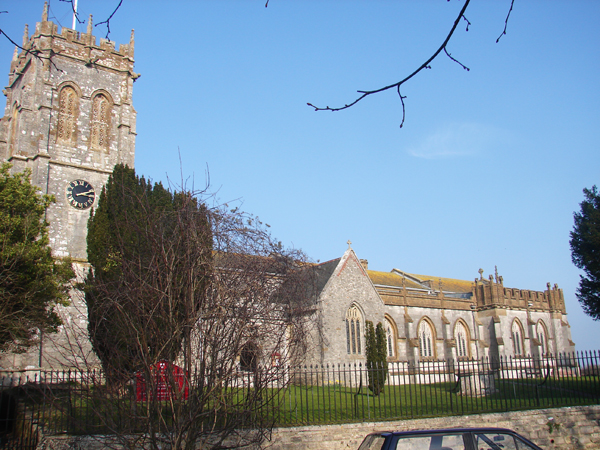© Copyright Mr. M Russell FIPD All Rights Reserved - April 2014 - Last updated May 2016
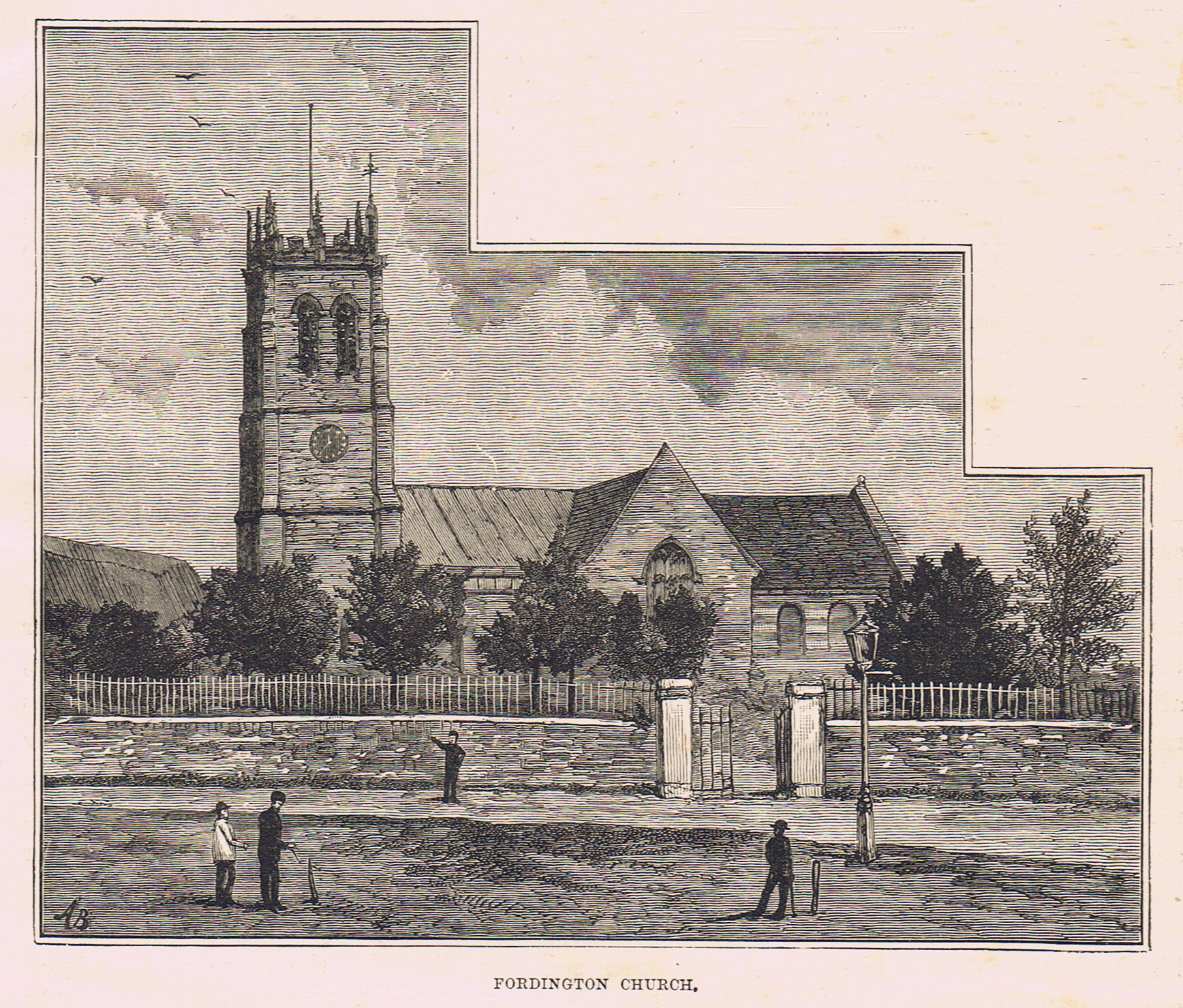
Antique Print from page 313 of 'Our Own County' by Cassell

From the lower levels of the village the road climbs to a gentle hilltop where stands the church of St George and for sixteen centuries the dead have been buried. Its 15th century perpendicular tower embattled with pinnacles looks down upon the water meadows of the River Frome and in the distance the blue line of the Purbeck Hills. The village green bordered with houses lies close to the elevated front of the church which stands on the site of a Roman Cemetery. 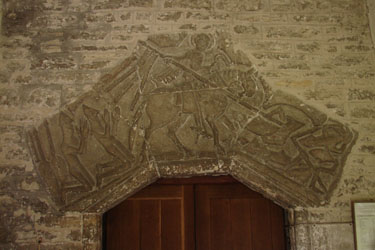 The path leading to the south entrance hall harbours a Tympanum Stone situated in pride of place above the door leading to the church (picture left). It is said to be of great antiquity and may have been given to the church by William Belet who was awarded with the 'Manor of Fordington' by William the Conqueror. It is recorded that St George came to the assistance of crusaders on both the first and third crusades. If Belet went on the first crusade then it seems he was being hard pressed by Saracens at the battle of Dorylatum 1097, when St George came to his aid. He and his squire have fallen on their knees in thankfulness. There are some differences in the armour of the two groups. The path leading to the south entrance hall harbours a Tympanum Stone situated in pride of place above the door leading to the church (picture left). It is said to be of great antiquity and may have been given to the church by William Belet who was awarded with the 'Manor of Fordington' by William the Conqueror. It is recorded that St George came to the assistance of crusaders on both the first and third crusades. If Belet went on the first crusade then it seems he was being hard pressed by Saracens at the battle of Dorylatum 1097, when St George came to his aid. He and his squire have fallen on their knees in thankfulness. There are some differences in the armour of the two groups. The church originally built in the form of a cross has portions of the south aisle and porch dating from the late 12th century. The south transept was probably added in the 14th century although new arches were inserted in the late 15th century and remodeling took place in 1754. The west tower was also built in the late 15th century. In the 18th century a new chancel was built which has since been destroyed, and in 1833 the north aisle and arcade were added. A very large scheme of rebuilding and eastward extension of the church was begun in 1907 which has altered the character of the building. During excavations for these modern alterations, old foundations were revealed aligned east-west beneath the 12th century south arcade, and aligned north-south between the 12th/15th century composite pier on the south and the position of the pier now opposite. These foundations may indicate the position of the south wall of the nave and the chancel arch of an older church. The late 11th century south doorway of the present church is undoubtedly reset from this early church. Other foundations may have been no more than later sleeper walls. A Roman tombstone discovered under the porch is now in the nave. Fordington was undoubtedly a minster in the late Saxon period. [Source: The Dorchester benefice; English Heritage etc] |
The oldest impression of the church that I have managed to locate is the sketch shown below (left). It is by an unknown artist and said to depict the church as it looked around the year 1845. The church had not changed in appearance very much since the new chancel was built in the 18th century and the sketch depicts the church as it stood after the north aisle and arcade were added in 1833. Another sketch was published by 'Cassell' in their book "Our Own County". The original edition is dated 1882 but there was a revised edition in 1898. This shows a large wall to the left of the tower, and another wall topped by iron railings running across the front of the church with trees in front. 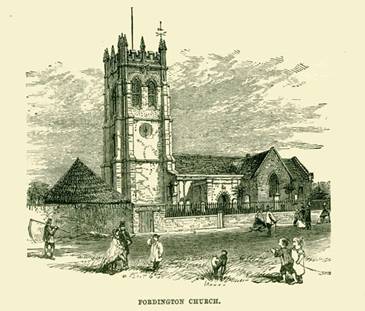 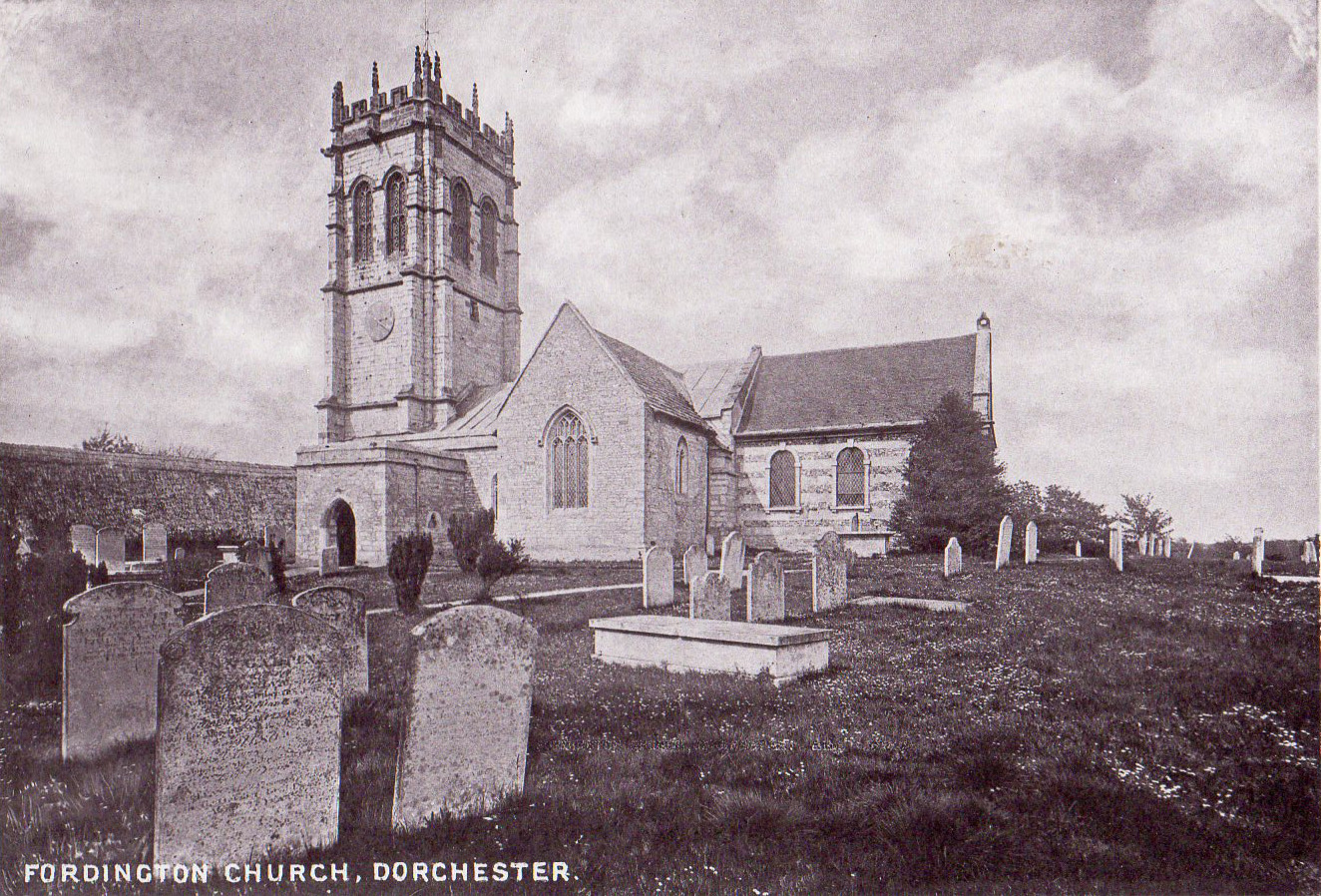
|
The Old Vicarage as stated above stood further down Fordington Hill next to Salisbury House and is clearly identified on the 1886 Ordnance Survey Map of Fordington. The vicar there from 1829 to 1880 was the Rev Henry MOULE MA (1801-1880) and we are lucky to have a photograph of the Moule Family standing on the lawn which we know was taken on 5th August 1869. The picture to the right was painted by Rev Handley Carr Glyn Moule (1841-1920) and a similar view was also painted by his elder brother Henry Joseph Moule (1825-1904) . 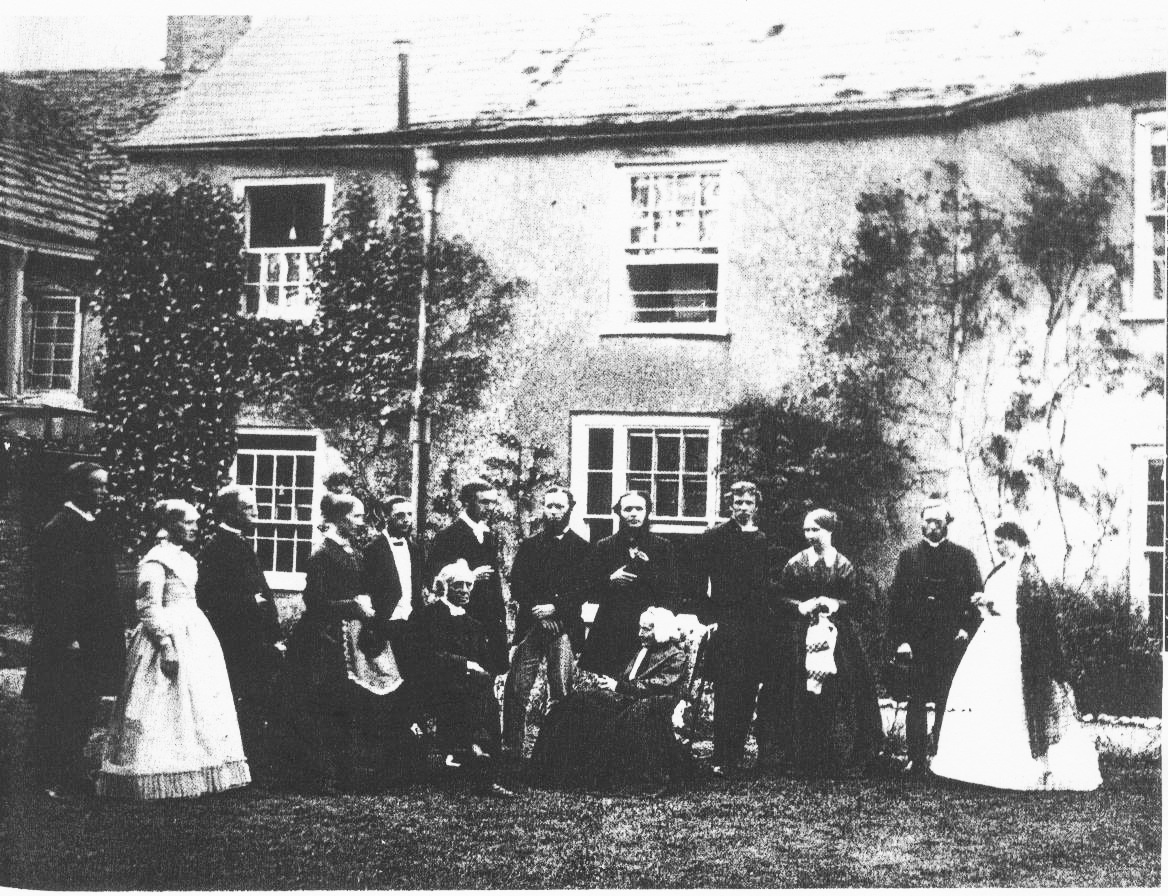 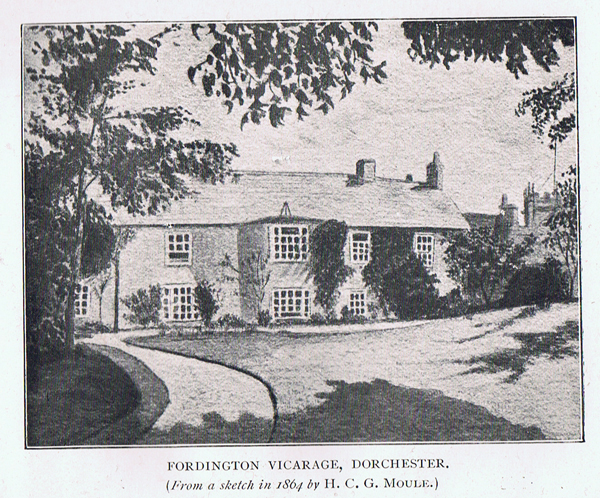 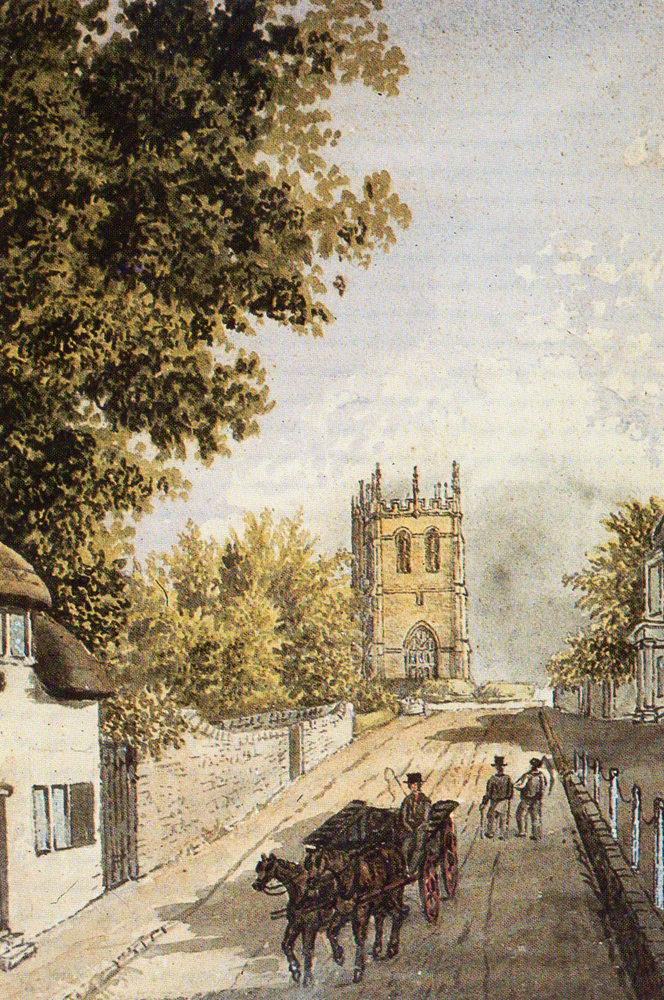 Above is a watercolour and pencil sketch of Fordington High Street done by Henry Joseph Moule in the mid 19th century. The original is part of the Henry Moule collection held at the Dorset County Museum |
| 3. The Four Post Cards shown below of St Georges Church were all taken around the start of the 20th Century, after the wall was removed, and are difficult to date as taken from different angles, elevations and distances. My best guess reasoned as shown below is that the first two date from 1900 and the next two from about 1904. The first card, top left below, is taken from within the right hand side of the churchyard and the new vicarage can clearly be seen on the left hand side of the tower. From the 1901 Ordnance Survey map it can be seen that the vicarage actually sits well back and left of the tower and is accessed both from Fordington Hill and at the side from pound lane. This picture is taken from a higher elevation than that above right and the tree has grown towards the top of the roof and encroached towards the window. The card itself is unused and was printed by Stengel and Company in Saxony. Stengel & Co was founded in Dresden in 1889 and an office opened in London in 1901 and at one time they were the worlds largest producer of post cards. Distribution in Britain was carried out by O.Flammger of Southwark in London who is also identified on the back by the initials O.F. The Post Card has a divided back and was therefore printed after 1st Jan 1902 and before 1906 when they stopped production in Britain. I think the actual photographs however were taken a few years earlier around the year 1900. The Post Card top right is taken from much further back on Fordington Green and refers to the Vicarage on the front of the card. To the right can be seen the entrance to the church by the gas lamp and just visible behind the gas lamp at the end of the church is the tree shown far right in the first card which looks to be of a similar height. This makes me think that the bigger trees in front of the church shown in the sketch at the top of this account and shown to have grown in this card are in fact still there in the first card but out of view on the left. The gateway in the wall to the left is actually the entrance to the vicarage shown as a long path on the 1901 ordnance survey map. 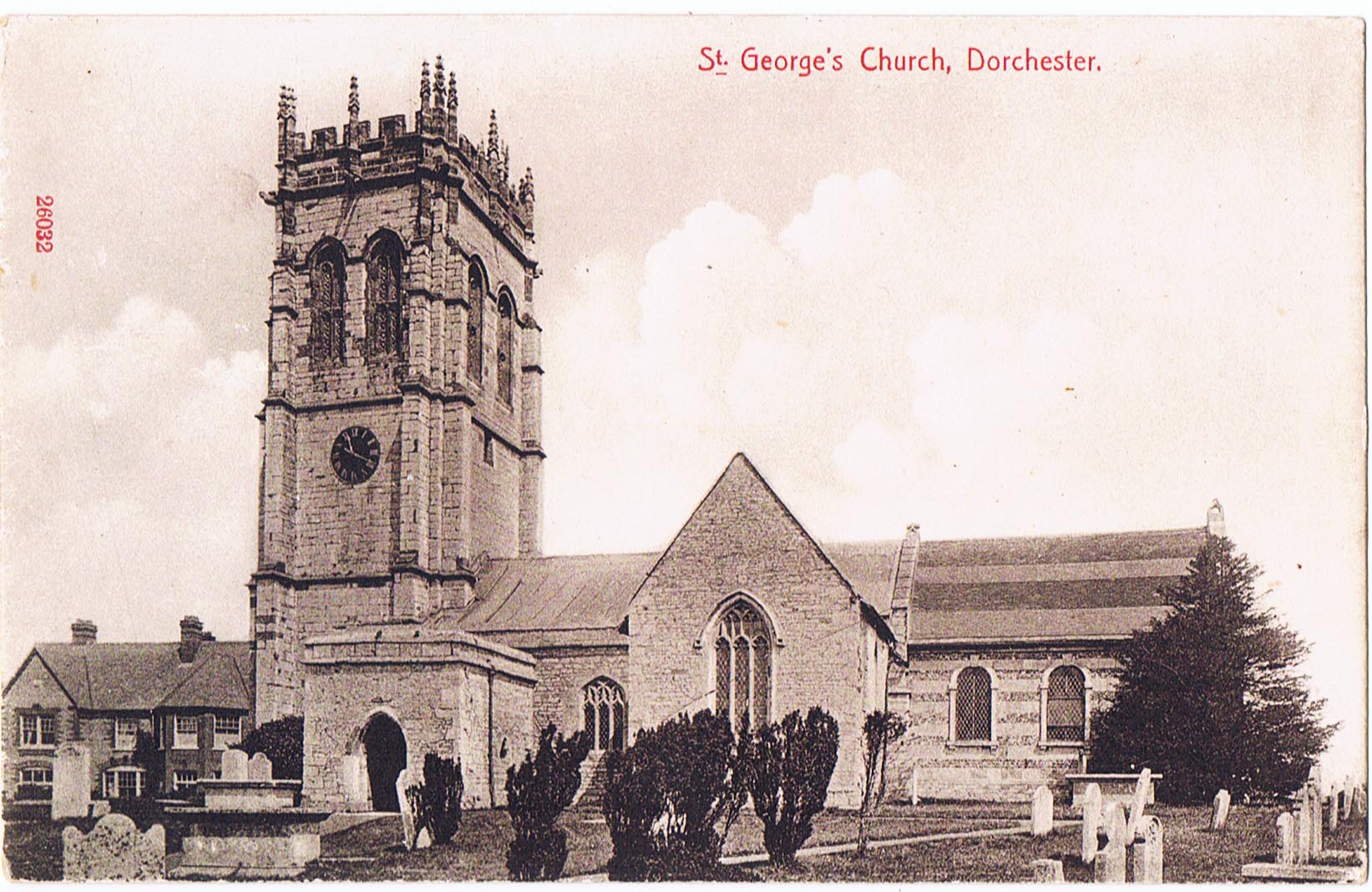 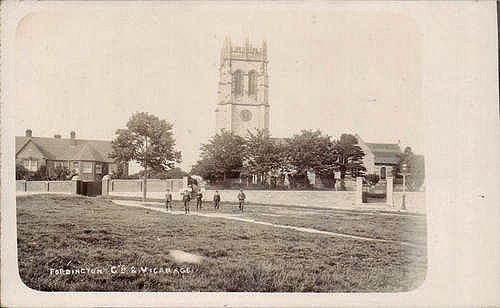 The Post Card bottom right is taken about the same date and usefully includes the vicarage and identifies it as such on the front of the card. The gas lamp still stands next to the entrance to the churchyard. 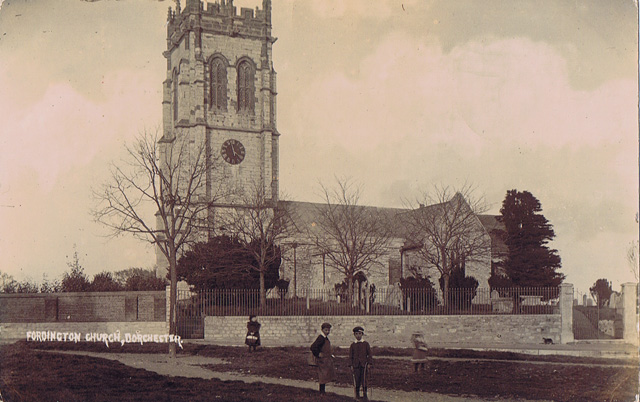 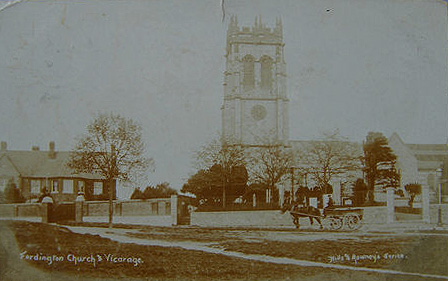
|
St George's Church (First paragraphs from a reprint from the Dorset County Chronicle - February 7th 1929 & found among papers of Rev Richard Bartelot) Another noteworthy chapter has been added to the history of the Prebendary church of Fordington St. George, dating from Norman times, by the completion of the new chancel and side chapel of St Edward the Martyr in connection with the important scheme, of restoration and enlargement. That scheme was launched in 1907, about a year after the present Vicar (Rev.R.Grosvenor BARTELOT) was collated to the living, and it is due largely to his unquenchable enthusiasm that the scheme has now almost reached fruition. He has, as it were, been the mainspring and master mind, and his knowledge of matters architectural has been of inestimable value throughout the progress of the work. A beginning was made in 1907, by putting in the foundations of the extended nave and aisles and this part of the scheme was completed to permit of the dedication service being performed on "the seventh day of the seventh month" in 1912 by the then Bishop of Salisbury Dr.F.E.Ridgeway. It was in 1914 that the foundations of the new chancel were laid, and then there was a temporary cessation of work owing to the war. A few years ago operations were resumed in real earnest, and the chancel and Edward Chapel were used for public worship on Christmas Day so that the work has really lasted 21 years. 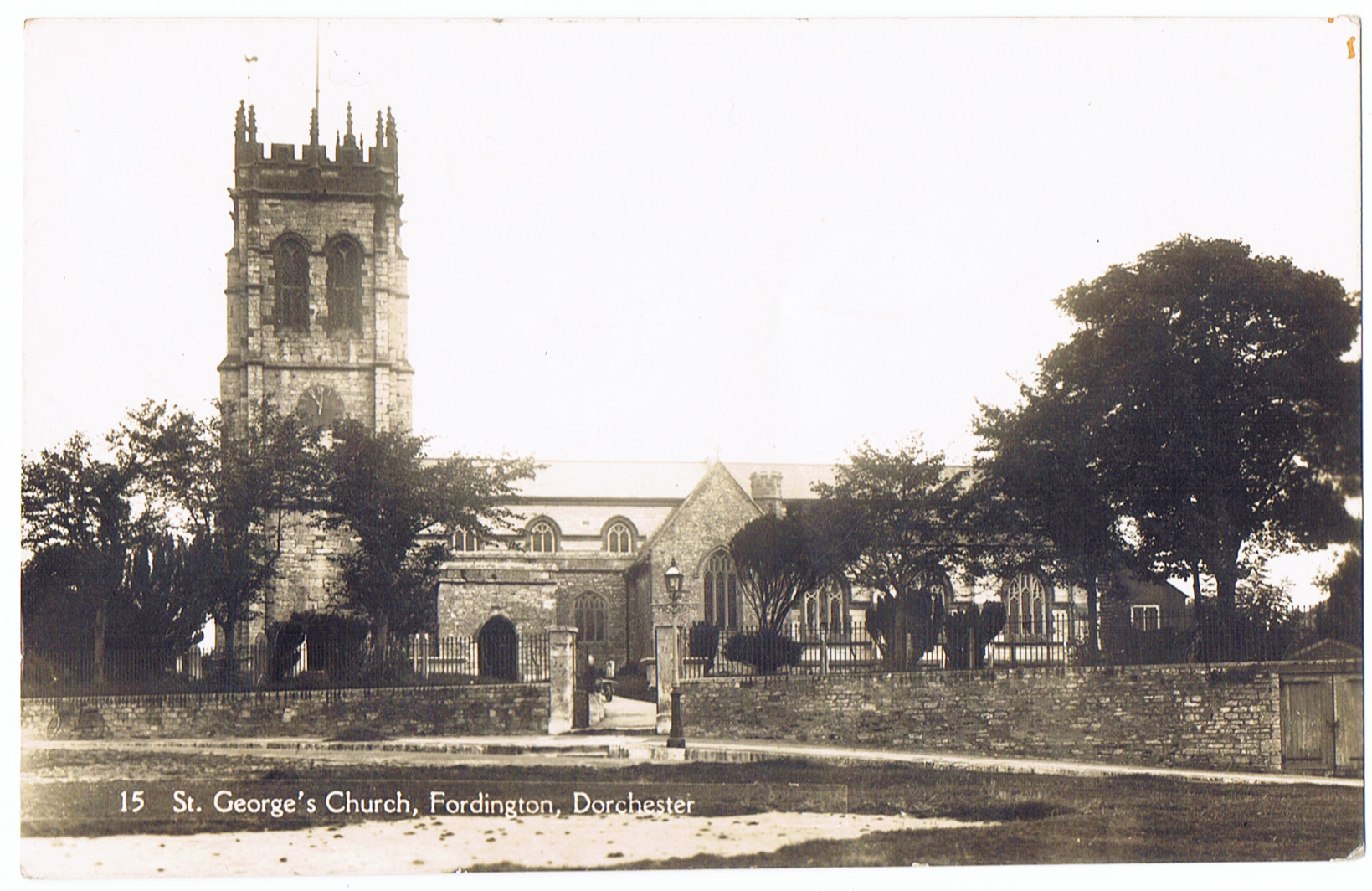 Postcard used 30 Sep 1946. Photograph must be circa 1929 as not yet fully extended as in 1937 postcard in the next section below The nucleus of the fund for building the chancel was a legacy bequeathed by the late Mr Percy Paris POPE barrister (a son of Mr Alfred POPE of South Court and a brother-in-law of the Vicar) who was reported missing in the war in 1915. The whole of the chancel is really the gift of the Pope Family. It stands partly on the ground of the old prebendal chapel erected by Cardinal Morton, once prebendal rector of Fordington, and it is interesting to note that it is built on the lines and with some of the material of the beautiful old chancel, which is thus described in Hutchins' "History of Dorset: "In the old chancel of Fordington was a very handsome piece of architecture. It had stalls on each side of it, after the manner of cathedrals, of oak, very curiously carved, guilt and painted; the roof of timber in the like manner very curiously devised, and much larger and longer than the body of the church." A striking feature on the north side of the new chancel is a canopied tomb with a soldier's helm suspended over it. This has been appropriately designated the "Missing Warrior's Tomb," and all parishioners who had relatives missing in the war are asked to look upon it as their shrine and deposit flowers there. A triple sedilia has been carved on the south side of the chancel, and lined with oak and fitted with cushions. Immediately above is a beautiful stained glass memorial lancet window, representative of St George as sentinel watching the alter. This is a gift of Mr Arthur Charles COFFIN as a memorial to his parents and bears the following dedicatory inscription:- "To the glory of God and sacred to the memory of John & Mary COFFIN, some time worshippers in this church." The window was designed and executed in the studio of Mr Glasby, London. The east window is a striking example of a development of the Decorated and Perpendicular period of the original design, and the five lights are fitted with cathedral glass, which has a very subduing effect. 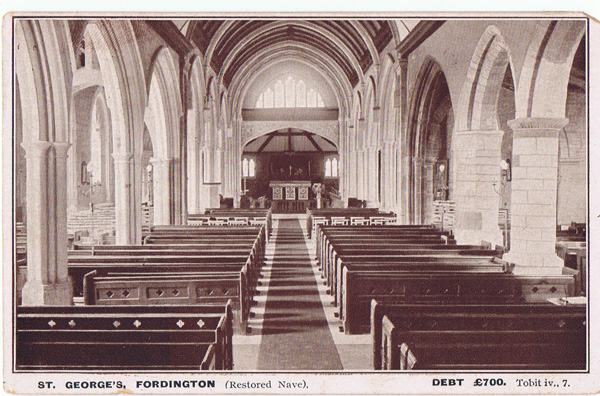 In 1908 the Prince of Wales sent a donation of £50 towards the cost of extending the church The original cost of the extension was projected in 1906 to be over £7,000 |
St Georges Church - 1937 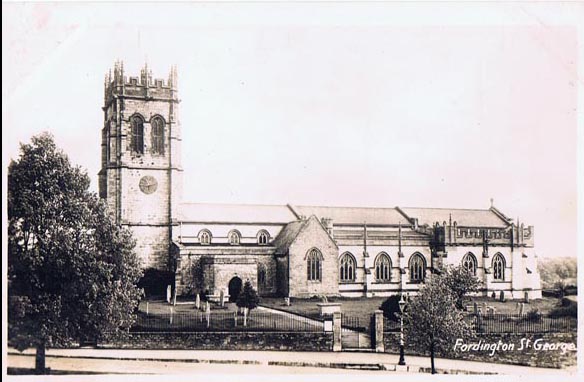 Postcard used 19 Nov 1937. The church was enlarged and the chapel added during the incumbency of Richard Grosvenor Bartelot (1868-1947) Vicar of St Georges Church 1906-1936 |
Fordington Green - 29 Mar 2012 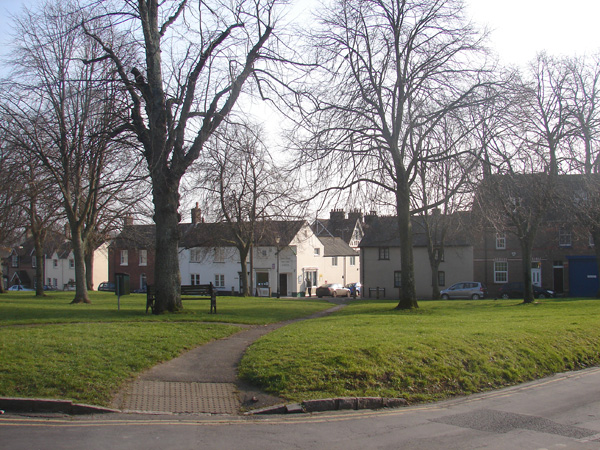 Looking from the Church across the Fordington Green |
Fordington Green - c1927 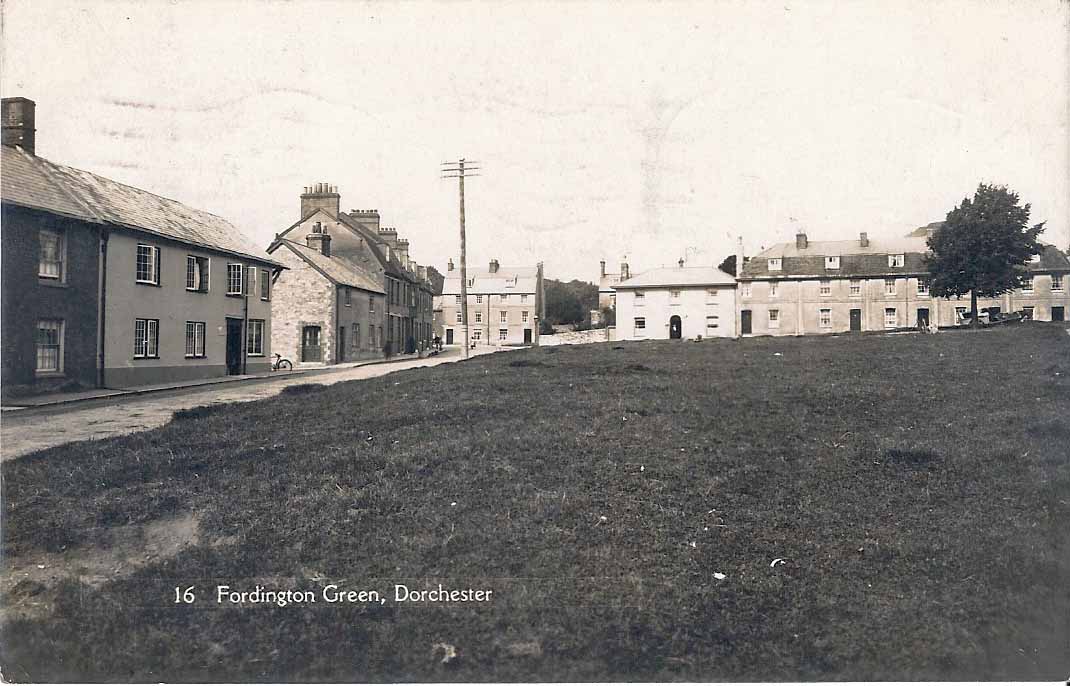 The 2nd house on the left is now divided into No. 9 (Bedloe House) and No. 8 "The Shop on the Green" (which has its own website) and sits on the corner of Dukes Avenue. Follow link to see a great view of the church from that street "Postcard by kind permission of Eddie Prowse |
